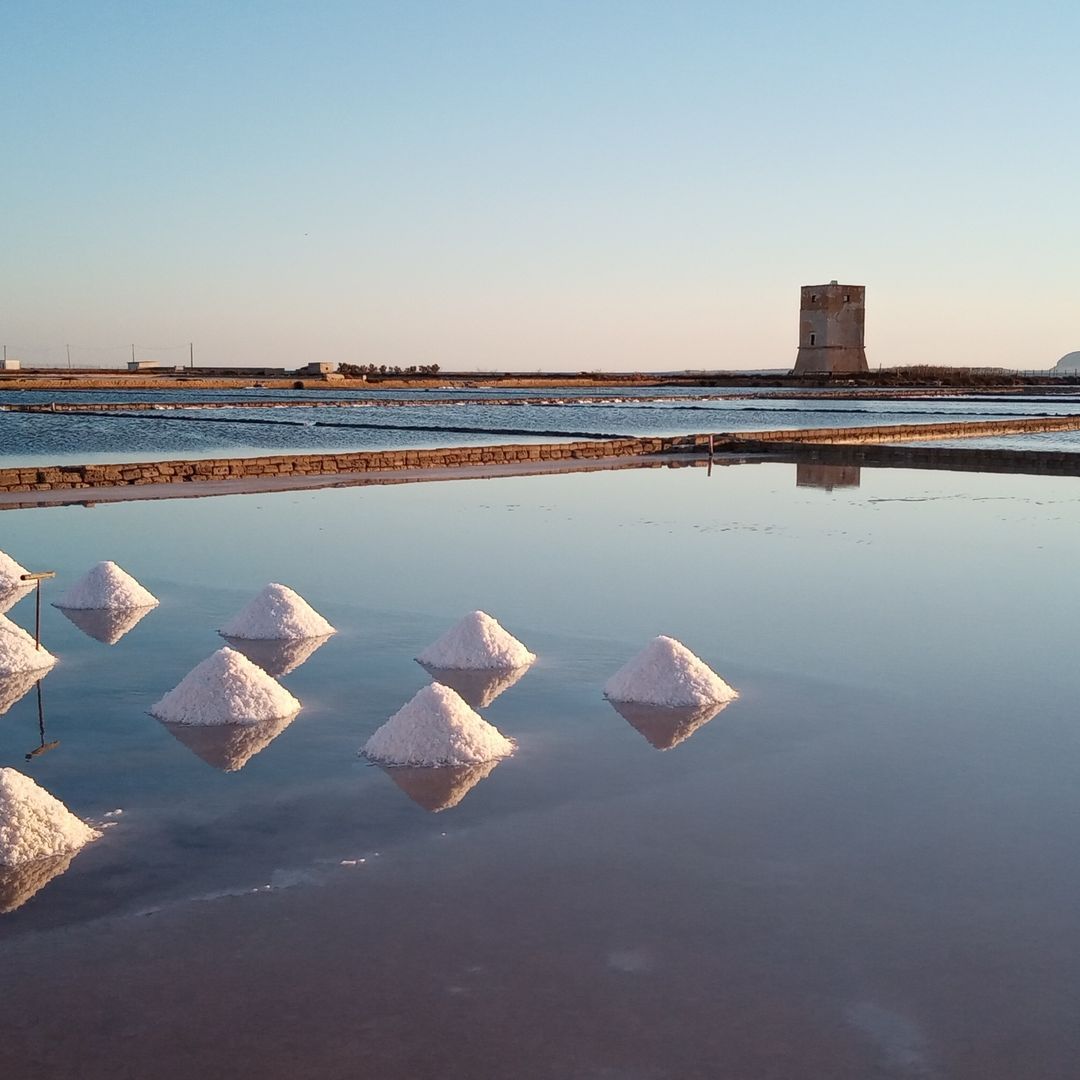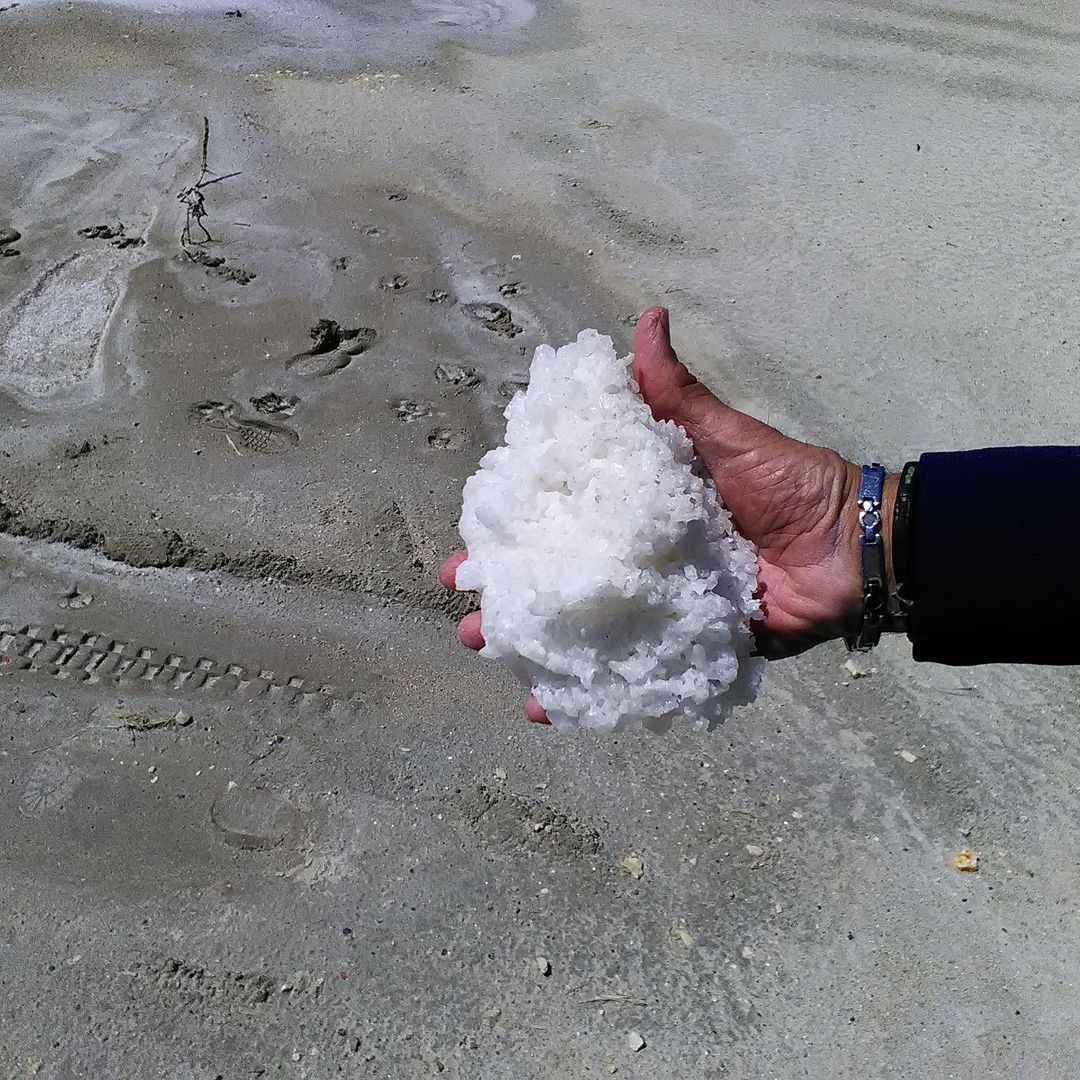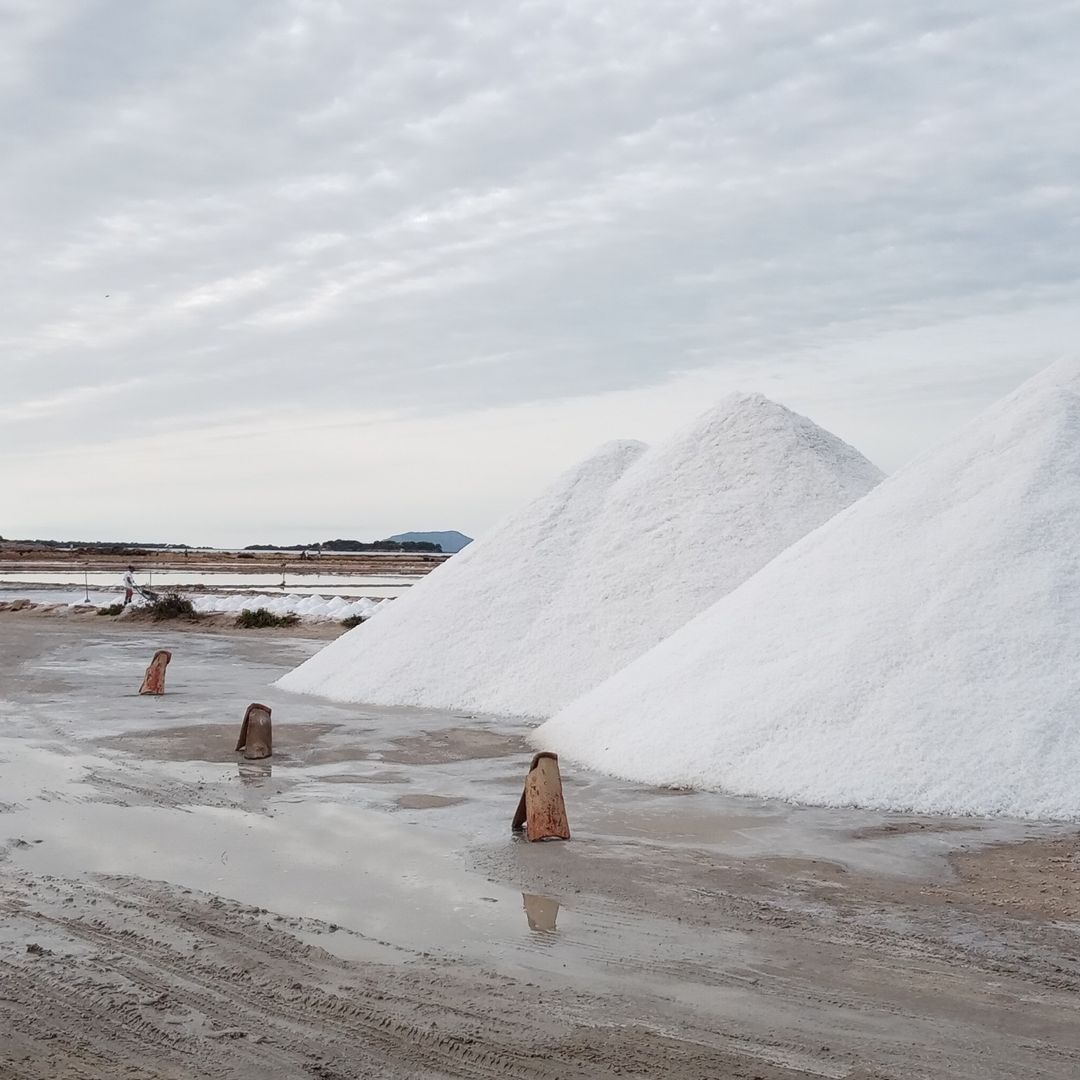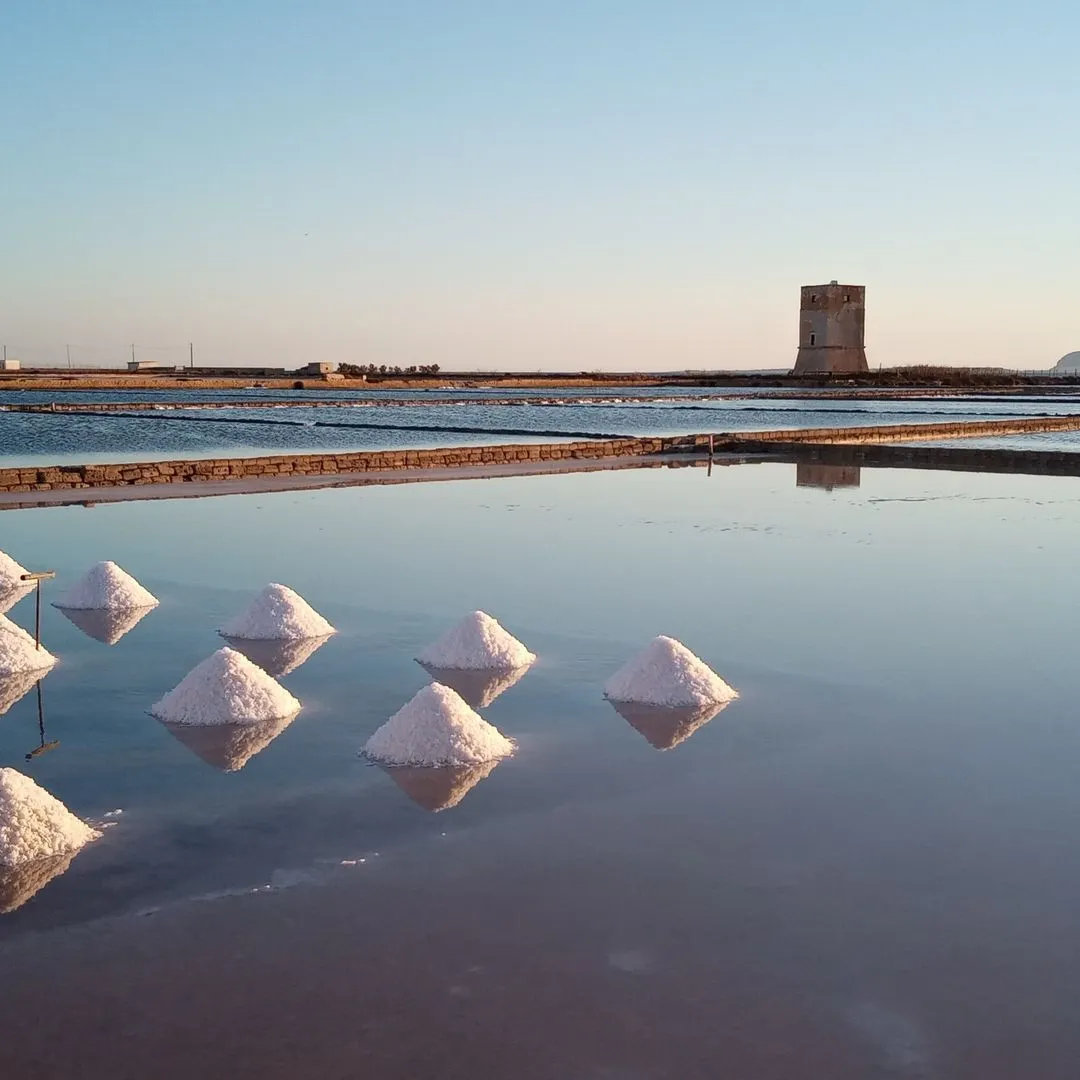Discovering the Culcasi Salt Pans: where salt becomes art and tradition.

In the heart of western Sicily, amidst the golden hues of the sun and the salty breezes of the Mediterranean, lie the Culcasi Salt Pans. Located in Nubia, near Trapani, these salt pans are more than just a place of salt production, but a true open-air museum that recounts centuries of history, culture, and passion.
A journey through time: the tradition of the Culcasi Salt Pans

The Culcasi Salt Pans represent one of the oldest testimonies of Sicilian salt-making art. Founded by the Culcasi family over a century ago, these salt pans have maintained the traditional method of salt harvesting, a process that takes place within the Trapani and Paceco Salt Pans Nature Reserve. The Culcasi Salt Pans represent one of the oldest testimonies of Sicilian salt-making art. Founded by the Culcasi family over a century ago, these salt pans have maintained the traditional method of salt harvesting, a process that takes place within the Trapani and Paceco Salt Pans Nature Reserve.
winenews.itThe Salt Museum: guardian of ancient memories and tools
Inside the Culcasi Salt Pans is the Salt Museum, a fascinating place where you can admire the ancient tools used by salt workers: from wooden shovels to the cathedras (towed platforms) for transporting salt, to the windmills that once served to move water between the basins. The museum offers an immersive experience, allowing visitors to fully understand life and work in the salt pans.
Sea salt vs. common salt: what are the differences?

Whole sea salt, like the kind still harvested today at the Culcasi Salt Pans, is profoundly different from ordinary table salt, not only in its appearance, but also in the way it is produced and its natural properties. Unlike refined salt, which undergoes lengthy industrial and chemical processes, sea salt is obtained completely naturally, through the evaporation of seawater under the scorching Sicilian sun. Its an ancient method that requires patience, time, and favorable environmental conditions, but it preserves the authenticity and richness of the final product. Thanks to this slow and nature-friendly process, sea salt retains a precious variety of minerals such as magnesium, potassium, and calcium, elements often eliminated during industrial refining. This also explains its fuller, more complex, and distinctive flavor, and its coarser, more vibrant texture. And then theres fleur de sel, a true delight for connoisseurs. This variety grows on the surface, like a thin crust that forms in the basins during hot, dry, and poorly ventilated days. Its harvested strictly by hand, with slow and respectful, almost ritualistic gestures that preserve its integrity. The result? A rare, delicate, and incredibly aromatic product, comparable to a fine spice.
paolobulgarelli.comA heritage to be experienced and preserved

Visiting the Culcasi Salt Pans means immersing yourself in a world where nature and tradition blend in perfect balance. Guided tours offer the opportunity to explore the salt pans, observe the salt harvesting process up close, and taste the prized flavored fleur de sel.
www.salineculcasi.it

flavio_campaniolo
Data di inserimento 12 apr 2025
Report article


Comments
There are no comments yet.